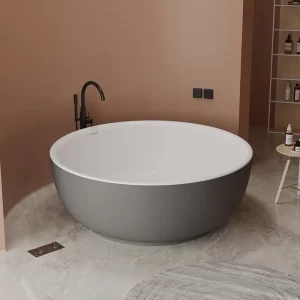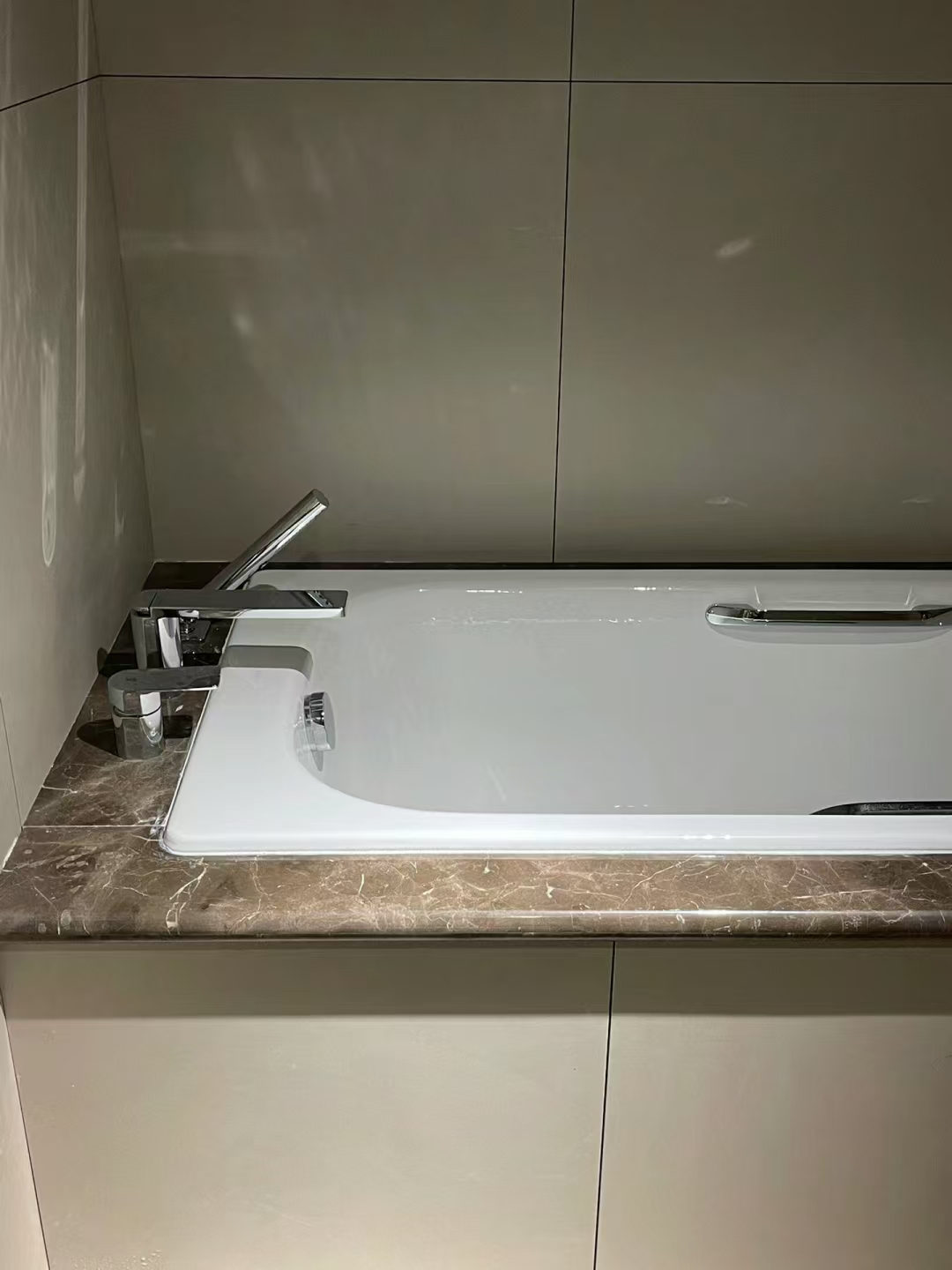Let’s talk about a problem that is a little bit of a headache but you have to face it – stubborn stains on marble bathtubs. You know, sometimes you feel powerless over those small marks that seem to persist always. Not to worry; I will provide you some easy and efficient advice to enable you to quickly handle these unpleasant marks and restore the shine of your bathtub!

Why do marble bathtubs easily accumulate stains?
First of all, we have to find out why marble bathtubs discolour so readily. Marble is a natural stone with a lovely, smooth surface; nevertheless, it is also somewhat “delicate”. Over time, water stains, soap bubbles, cosmetics, even hard water minerals will silently enter a porous structure and gradually deposit stains on the surface. Should these stains not be promptly cleaned, they will get increasingly difficult to remove and perhaps cause you to question, is this indeed my shining bathtub?
Teach you how to deal with stubborn stains step by step
Let’s now begin to address these tough stains methodically step by step! Don’t worry, the process is actually not as complicated as you think.
Step 1: Gentle cleaning is key
First let us warm up with some little cleaning. Marble doesn’t like those strong acid and alkaline cleaners, so let’s use some mild soapy water. To warm water, add a few drops of neutral soap; stir well; then, softly clean the bathtub’s surface with a soft cloth or sponge. This is mostly to get rid of surface minor stains and dust, getting ready for the next deep clean.
Step 2: Homemade cleaning tips
If gentle cleaning doesn’t completely solve the problem, let’s try some homemade cleaning tips. To create a paste from baking soda and water, then lightly dab it on the stain. Then, remembering to be careful, softly clean it with a moist towel. Natural cleanser baking soda won’t harm the marble surface and its little particles will help you grind off any tough stains.
Step 3: Targeted cleaning
If the first two steps are not enough, we have to take targeted actions. You might try white vinegar for mineral stains created by hard water, but keep in mind you should dilute it! In a 1:1 ratio, mix white vinegar and water; spray the stain; let it sit for a few minutes; then, gently remove the stain with a soft cloth. White vinegar can effectively dissolve minerals, but because it is acidic, be sure to rinse it thoroughly with clean water after use.
Step 4: Professional Cleaner
If you still feel that these stains are “strong”, it’s time to use a professional cleaner. Some cleaning agents available on the market are meant especially for marble. Apart from cleaning, they create a protective layer on the surface to stop fresh stains. Use the directions exactly to make sure you won’t damage the stone.
Better than cure is prevention: how can you maintain your bathtub fresh and new?
While cleaning is important, prevention is more important! There are several pointers that might assist you minimise stain occurrence and keep your marble bathtub clean and new.
Regular cleaning
Regular cleaning is the key to keeping your bathtub clean. To stop stains from building up, spend a few minutes a week gently washing the bathtub’s surface with gentle soapy water.
Deal with spills promptly
If there is any soap, shower gel or other products left after every bathtub usage, make sure to tidy them right away. This will stop their leaving traces on the marble surface.
Use soft water
If your home water is hard, it is recommended to install a water softener. By lowering the mineral concentration in the water, a water softener can help to prevent source hard water stains.

Actually, marble bathtub cleaning is not challenging. As long as you master the correct methods and steps, you can easily deal with those annoying stubborn stains. Keeping your bathtub sparkling and new mostly depends on frequent maintenance, focused treatment, and mild cleaning. The next time you see a small stain on the bathtub, don’t worry, try these methods and enjoy the sense of accomplishment after cleaning!
Frequently Asked Question (FAQ)
How often should you seal your marble bathtub?
The recommended frequency of marble bathtub sealing depends on the bathtub’s usage and the chemical components used. Frequent use—especially with aromatherapy oils and bath salts—may raise sealing frequency because of faster marble ageing. Still, the bathtub can last for more than a year if it is not used regularly and kept clean. Drop some water on the surface of the bathtub and wait a few minutes to see whether it needs sealing. If the water remains on the surface, the seal is still effective, but if it absorbs and leaves a dark watermark, it’s time to seal again.





